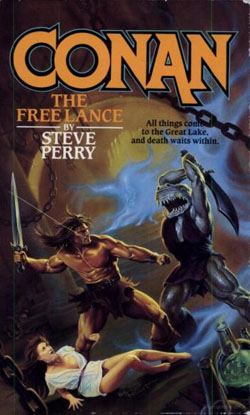In the Grip of “The Northern Thing:” My Top 10 Northern Inspired Stories
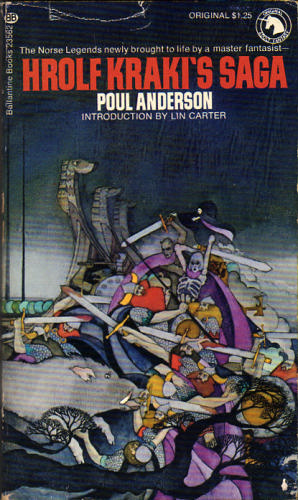 Let us die in the doing of deeds for his sake;
Let us die in the doing of deeds for his sake;
let fright itself run afraid from our shouts;
let weapons measure the warrior’s worth.
Though life is lost, one thing will outlive us:
memory sinks not beneath the mould.
Till the Weird of the World stands unforgotten,
high under heaven, the hero’s name.
–from Hrolf Kraki’s Saga, Poul Anderson
If I had to choose a favorite sub-genre of fantasy literature it would be those writings showing the clear influence of ancient Northern mythology. Fantasy critic Lin Carter once described a group of writers including the likes of J.R.R. Tolkien, Poul Anderson, and William Morris as being possessed by “The Northern Thing”; I too am firmly in that Icelandic grip of iron. There’s just something about tales of pagan heroes possessed of grim northern courage, set against a backdrop of bleak fjords and smoldering mountain peaks and gray lowering skies, that make me want to hop on the nearest dragon-headed longship and go a-viking.
Following in no particular order are my top 10 favorite northern stories. These are stories inspired by northern myth (the Prose and Poetic Eddas), legend (the Icelandic Sagas), or history (the Danish invasions of England), and sometimes all three at once.
1. The Broken Sword, Poul Anderson. Arguably the greatest fantasy novel without the name J.R.R. Tolkien on its cover, The Broken Sword combines Norse mythology, inexorable tragic fate, faerie races vs. encroaching humanity, and Christianity vs. Paganism in a bloodthirsty, unforgettable saga.
2. Hrolf Kraki’s Saga, Poul Anderson. Anderson makes his second appearance on this list, the only author to do so. Hrolf Kraki’s Saga is a terrific, too little known novel that moves with the speed of lightning (just 260 pages) and hits with the impact of Thor’s hammer. It’s also a retelling of the life and times of an actual Danish king of the same name, and is rendered even more powerful and mythic with its tragic Arthurian overtones.
 3. The Saxon Stories, Bernard Cornwell. Uhtred of Bebbanburg is a Saxon youth captured and raised among the Danes, who then proceeds to spend the next several books in this yet-unfinished series fighting alternately for both sides in war-torn 9th century England. The Saxon Stories features Cornwell, a brilliant historical fiction writer, at his near-best (though I still prefer his Warlord Trilogy) with Viking raids, shield walls, axes, dark ages combat, hall-burnings, and general mayhem galore. Great stuff.
3. The Saxon Stories, Bernard Cornwell. Uhtred of Bebbanburg is a Saxon youth captured and raised among the Danes, who then proceeds to spend the next several books in this yet-unfinished series fighting alternately for both sides in war-torn 9th century England. The Saxon Stories features Cornwell, a brilliant historical fiction writer, at his near-best (though I still prefer his Warlord Trilogy) with Viking raids, shield walls, axes, dark ages combat, hall-burnings, and general mayhem galore. Great stuff.
 Am I a bad gamer if I really, really want to play this game?
Am I a bad gamer if I really, really want to play this game?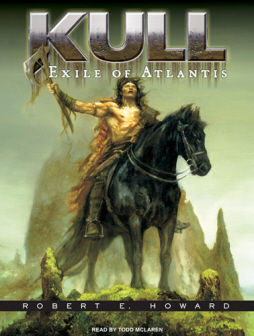 “Beyond the Sunrise” is the unofficial title afforded an unfinished Kull story that did not see print until over forty years after the author’s death. Its significance is due largely to the fact that it was the first of four widely differing attempts to continue the Kull series following the publication of both “The Shadow Kingdom” and “The Mirrors of Tuzun Thune” in Weird Tales in 1929.
“Beyond the Sunrise” is the unofficial title afforded an unfinished Kull story that did not see print until over forty years after the author’s death. Its significance is due largely to the fact that it was the first of four widely differing attempts to continue the Kull series following the publication of both “The Shadow Kingdom” and “The Mirrors of Tuzun Thune” in Weird Tales in 1929.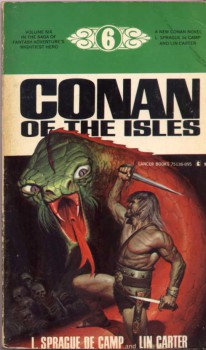

 It’s hard to add much about RE Howard to what’s been said here, but I’ll try.
It’s hard to add much about RE Howard to what’s been said here, but I’ll try. Conan the Unconquered
Conan the Unconquered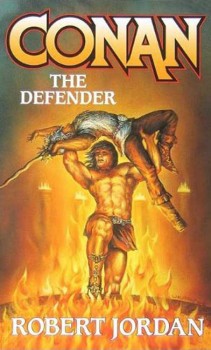 Conan the Defender
Conan the Defender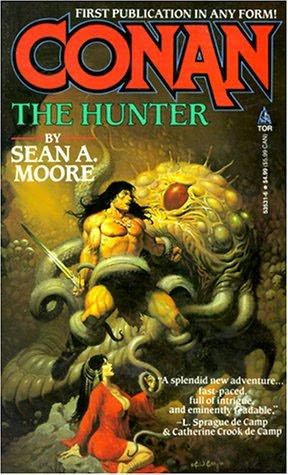 Conan the Hunter
Conan the Hunter